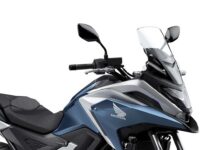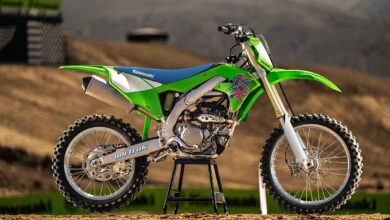Suzuki GSX-R750 Top 10 Models in 30 Years
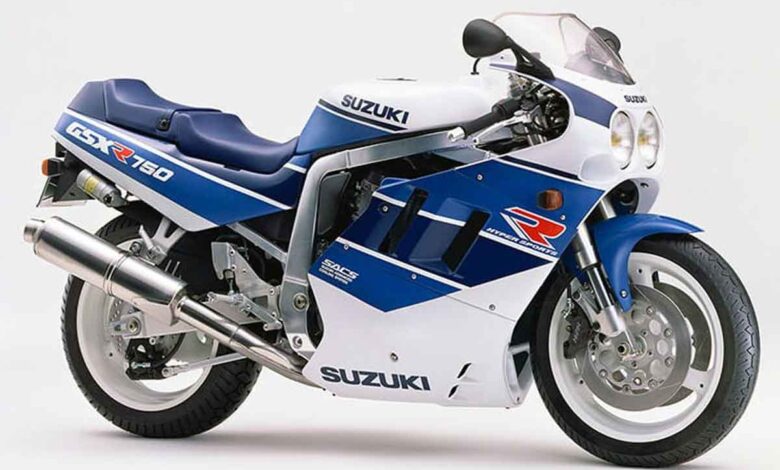
Contents
- 1 Suzuki GSX-R750 Top 10 Models in 30 Years
- 2 Suzuki GSX-R750: Top 10 Models
- 2.1 Description:
- 2.2 1985 Suzuki GSX-R750F
- 2.3 1988 Suzuki GSX-R750J ‘Slingshot’
- 2.4 1990 Suzuki GSX-R750L
- 2.5 1992 Suzuki GSX-R750WN
- 2.6 1996 Suzuki GSX-R750T SRAD
- 2.7 2000 SuzukiX-R750Y
- 2.8 2004 Suzuki GSX-R750K4
- 2.9
- 2.10 2006 Suzuki GSX-R750 K6
- 2.11
- 2.12 2008 Suzuki GSXR-750 K8
- 2.13 2013 Suzuki GSX-R750 K13
- 2.14 Conclusion
Suzuki GSX-R750 Top 10 Models in 30 Years

In honor of this milestone, we have delved into the archives to bring you the top 10 key models from the GSX-R 750 range over the past 30 years:
Suzuki GSX-R750: Top 10 Models
Description:
In this blog post, we will take a closer look at the Suzuki GSX-R750, an iconic sportbike that has been a favorite among motorcycle enthusiasts for decades. We will explore the history of the GSX-R750 and highlight the top 10 models that have left a lasting impact on riders worldwide. Whether you are a fan of the GSX-R750 or simply curious about its evolution, this article will provide you with valuable insights into this legendary motorcycle. The Suzuki GSX-R750 is a true legend in the world of sportbikes. Introduced in 1985, it quickly gained popularity for its exceptional performance, handling, and sleek design. Over the years, Suzuki has released numerous models of the GSX-R750, each one pushing the boundaries of what a sportbike can achieve. Let’s dive into the top 10 models that have made a significant impact on the motorcycle industry.
1985 Suzuki GSX-R750F
 Fondly referred to as the ‘Slabby’ due to its slab-sided styling, the original GSX-R is widely regarded as the first ‘racer-replica’. Essentially a street-legal version of the works GS1000R racer, it featured an ultralight construction weighing under 180kg dry, thanks to the use of magnesium to reduce weight. It boasted a revvy, oil-cooled engine (the tachometer in the race-style console didn’t register until 3000rpm), 29mm flat slides, a lightweight alloy double-cradle frame, 18-inch wheels, and bodywork based on the factory Formula 1 and endurance racers. It quickly became the bike of choice for proddie racers and cemented its status as a legend. The 1986 ‘G’ version received a longer swingarm and modified lower fairing, while the 1987 ‘H’ model featured stronger 41mm front forks. The 1985 Suzuki GSX-R750 was the first model to roll off the production line and set the benchmark for sportbikes in its class. With its lightweight frame, powerful engine, and aggressive styling, it quickly became a favorite among riders. The 1985 GSX-R750 showcased Suzuki’s dedication to performance and laid the foundation for future models.
Fondly referred to as the ‘Slabby’ due to its slab-sided styling, the original GSX-R is widely regarded as the first ‘racer-replica’. Essentially a street-legal version of the works GS1000R racer, it featured an ultralight construction weighing under 180kg dry, thanks to the use of magnesium to reduce weight. It boasted a revvy, oil-cooled engine (the tachometer in the race-style console didn’t register until 3000rpm), 29mm flat slides, a lightweight alloy double-cradle frame, 18-inch wheels, and bodywork based on the factory Formula 1 and endurance racers. It quickly became the bike of choice for proddie racers and cemented its status as a legend. The 1986 ‘G’ version received a longer swingarm and modified lower fairing, while the 1987 ‘H’ model featured stronger 41mm front forks. The 1985 Suzuki GSX-R750 was the first model to roll off the production line and set the benchmark for sportbikes in its class. With its lightweight frame, powerful engine, and aggressive styling, it quickly became a favorite among riders. The 1985 GSX-R750 showcased Suzuki’s dedication to performance and laid the foundation for future models.
1988 Suzuki GSX-R750J ‘Slingshot’
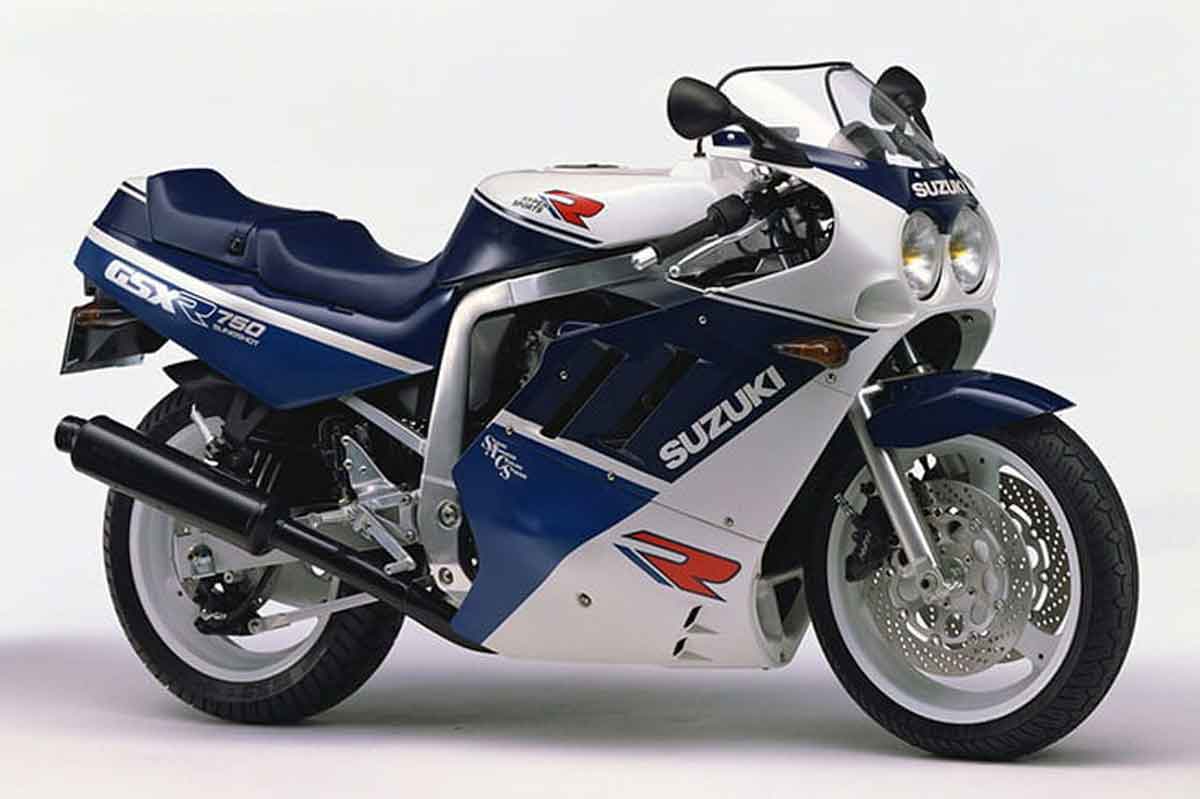 The first major revision of the GSX-R 750 came with the ‘Slingshot’ model, named after its new 36mm constant-velocity semi-flat slide carburetors. This model introduced significant changes to the entire bike: a revised short-stroke motor with bigger valves and high-lift cams increased horsepower from 100 to 112, while the suspension and brakes received upgrades. Smaller 17-inch wheels were introduced, along with more compact dimensions and smoother styling. However, this model also suffered from increased weight and reduced ground clearance. These issues were addressed in the ‘K’ version released in 1989, which also saw the introduction of the limited edition ‘R’ model (only available in Japan). The ‘R’ model reverted to the long-stroke motor and featured a distinctive single seat, aluminum tank, and approximately 120bhp. The limited edition ‘R’ models are highly sought after today.
The first major revision of the GSX-R 750 came with the ‘Slingshot’ model, named after its new 36mm constant-velocity semi-flat slide carburetors. This model introduced significant changes to the entire bike: a revised short-stroke motor with bigger valves and high-lift cams increased horsepower from 100 to 112, while the suspension and brakes received upgrades. Smaller 17-inch wheels were introduced, along with more compact dimensions and smoother styling. However, this model also suffered from increased weight and reduced ground clearance. These issues were addressed in the ‘K’ version released in 1989, which also saw the introduction of the limited edition ‘R’ model (only available in Japan). The ‘R’ model reverted to the long-stroke motor and featured a distinctive single seat, aluminum tank, and approximately 120bhp. The limited edition ‘R’ models are highly sought after today.
1990 Suzuki GSX-R750L
 Considered by many as the best of the oil-cooled models, the GSX-R750L introduced inverted forks (41mm fully adjustable) for the first time on a large capacity Japanese motorcycle. It also marked the return to the long-stroke motor, along with a new 4:1 exhaust, steering damper, 38mm carburetors (2mm larger than the previous ‘K’ model but 2mm smaller than the ‘R’), smaller valves, new conrods, lighter pistons, a larger oil pump, a larger curved oil cooler, and a wider rear rim. Michelin radials became standard tires, and power output increased to 115bhp at 11,000rpm while reducing weight to 193kg.
Considered by many as the best of the oil-cooled models, the GSX-R750L introduced inverted forks (41mm fully adjustable) for the first time on a large capacity Japanese motorcycle. It also marked the return to the long-stroke motor, along with a new 4:1 exhaust, steering damper, 38mm carburetors (2mm larger than the previous ‘K’ model but 2mm smaller than the ‘R’), smaller valves, new conrods, lighter pistons, a larger oil pump, a larger curved oil cooler, and a wider rear rim. Michelin radials became standard tires, and power output increased to 115bhp at 11,000rpm while reducing weight to 193kg.
1992 Suzuki GSX-R750WN
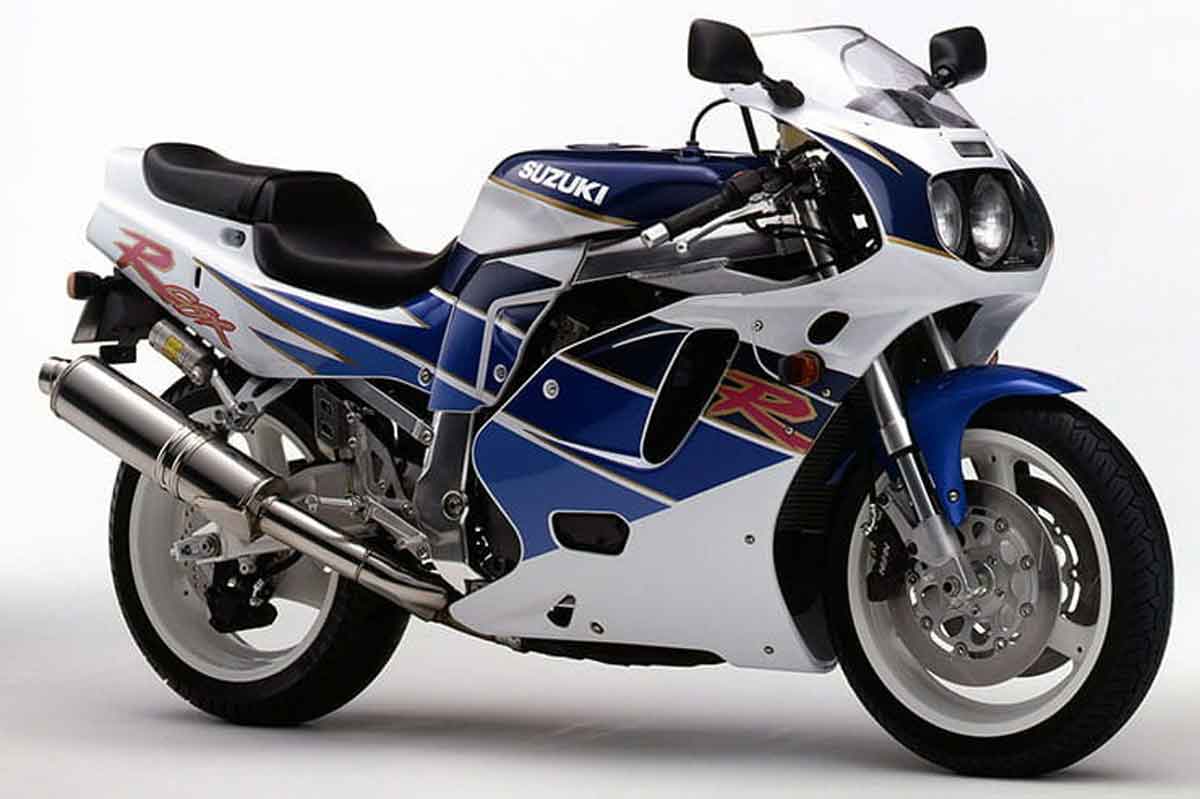 Although facelifted with the swoopier ‘M’ model in 1991, the next significant change arrived in 1992 with an all-new liquid-cooled engine (replacing oil cooling). This model introduced a more compact design and increased power output to 118bhp at 11,500rpm. Other changes included a cheaper/lighter plastic headlamp cover instead of glass, a new five-sided aluminum frame with a sandcast steering head section, and revised brakes and suspension. Unfortunately, rivals such as Kawasaki’s ZXR were already gaining an edge, making the double-cradle-framed GSX-R appear outdated.
Although facelifted with the swoopier ‘M’ model in 1991, the next significant change arrived in 1992 with an all-new liquid-cooled engine (replacing oil cooling). This model introduced a more compact design and increased power output to 118bhp at 11,500rpm. Other changes included a cheaper/lighter plastic headlamp cover instead of glass, a new five-sided aluminum frame with a sandcast steering head section, and revised brakes and suspension. Unfortunately, rivals such as Kawasaki’s ZXR were already gaining an edge, making the double-cradle-framed GSX-R appear outdated.
1996 Suzuki GSX-R750T SRAD
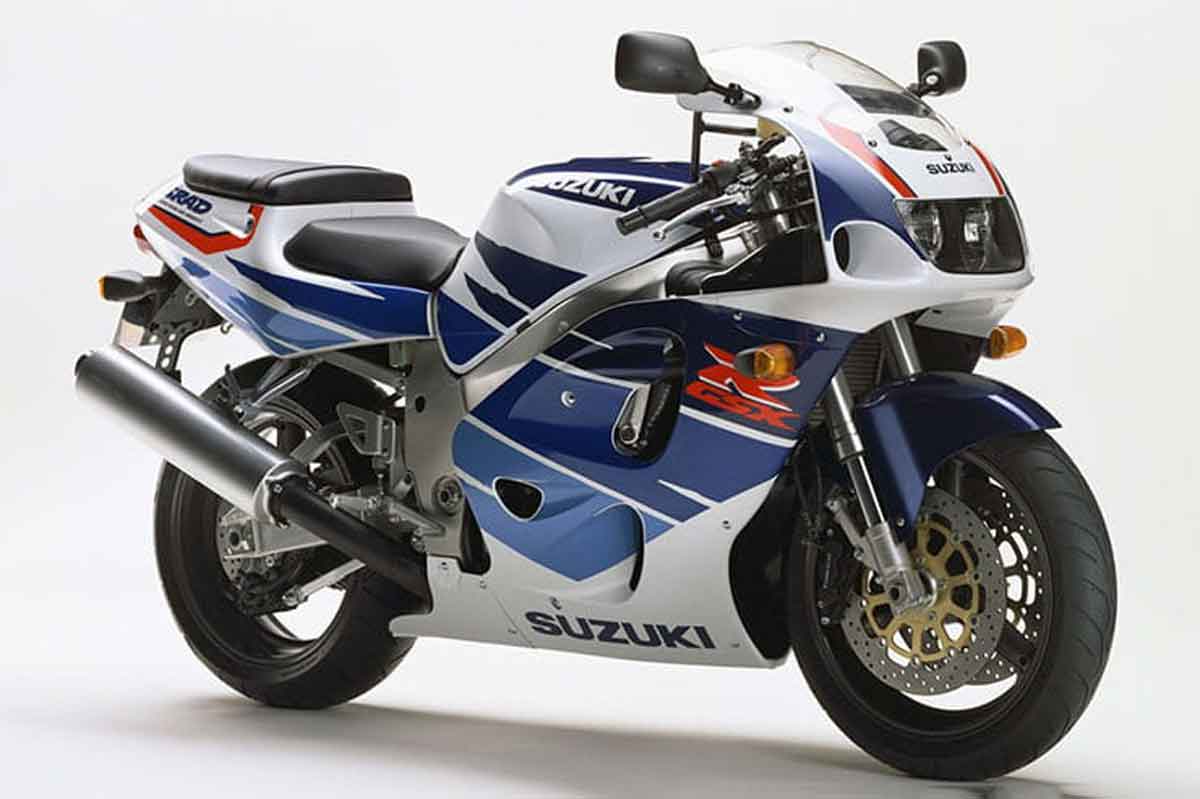 A revolutionary transformation took place in 1996 with the introduction of the ‘SRAD’ model. This was the first truly all-new GSX-R since the original in 1985 and incorporated technologies derived directly from the 500cc GP racer Kevin Schwantz had ridden in the World Championship the previous year. The twin loop frame was replaced with an all-new alloy twin beam frame, and a new engine featuring SRAD (Suzuki Ram Air Direct) induction and 39mm carburetors was introduced, delivering 128bhp. Importantly, weight was reduced by 20kg to match that of the original 1985 model (179kg), while wheelbase was shortened to 1400mm, rake became an aggressive 24º, resulting in pin-sh handling.
A revolutionary transformation took place in 1996 with the introduction of the ‘SRAD’ model. This was the first truly all-new GSX-R since the original in 1985 and incorporated technologies derived directly from the 500cc GP racer Kevin Schwantz had ridden in the World Championship the previous year. The twin loop frame was replaced with an all-new alloy twin beam frame, and a new engine featuring SRAD (Suzuki Ram Air Direct) induction and 39mm carburetors was introduced, delivering 128bhp. Importantly, weight was reduced by 20kg to match that of the original 1985 model (179kg), while wheelbase was shortened to 1400mm, rake became an aggressive 24º, resulting in pin-sh handling.
2000 SuzukiX-R750Y
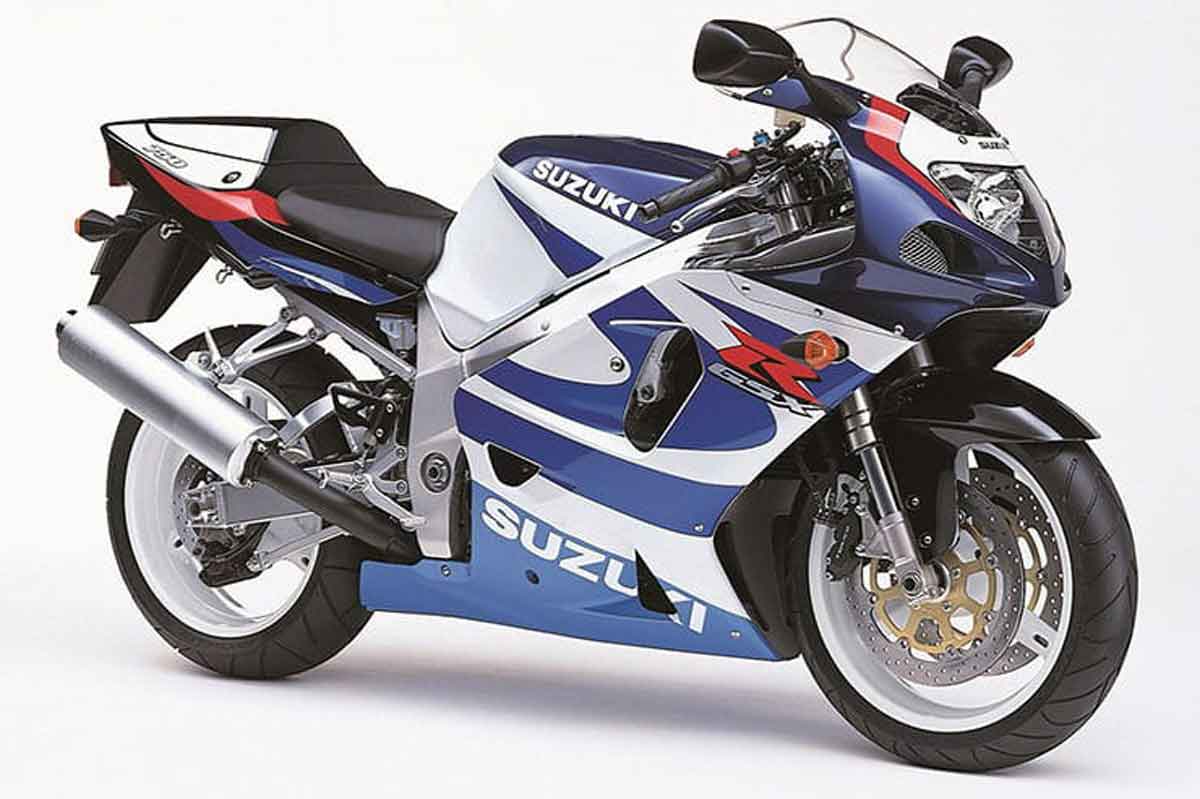 Another leap forward occurred with the introduction of the GSX-R750Y in 2000. The engine and chassis were completely redesigned, featuring more aerodynamic bodywork, a shorter and narrower engine with redesigned fuel injection (which had been introduced the previous year), and an impressive weight reduction of 13kg. The cylinders were now one piece with the upper crankcase for enhanced strength and weight reduction. The engine became narrower by both 15mm and 8mm, while the frame was further lightened. The swing arm was lengthened by 20mm (maintaining a wheelbase of 1400mm) for improved handling and traction control.
Another leap forward occurred with the introduction of the GSX-R750Y in 2000. The engine and chassis were completely redesigned, featuring more aerodynamic bodywork, a shorter and narrower engine with redesigned fuel injection (which had been introduced the previous year), and an impressive weight reduction of 13kg. The cylinders were now one piece with the upper crankcase for enhanced strength and weight reduction. The engine became narrower by both 15mm and 8mm, while the frame was further lightened. The swing arm was lengthened by 20mm (maintaining a wheelbase of 1400mm) for improved handling and traction control.
2004 Suzuki GSX-R750K4
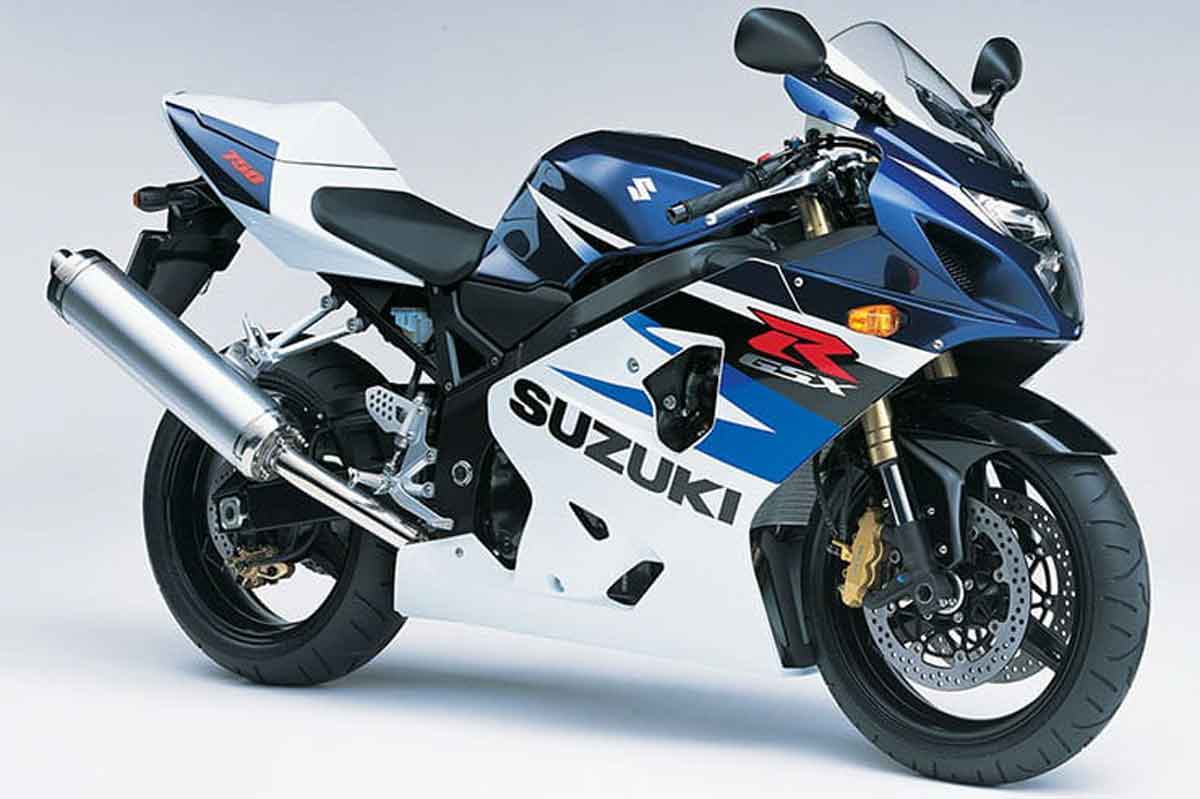
2006 Suzuki GSX-R750 K6
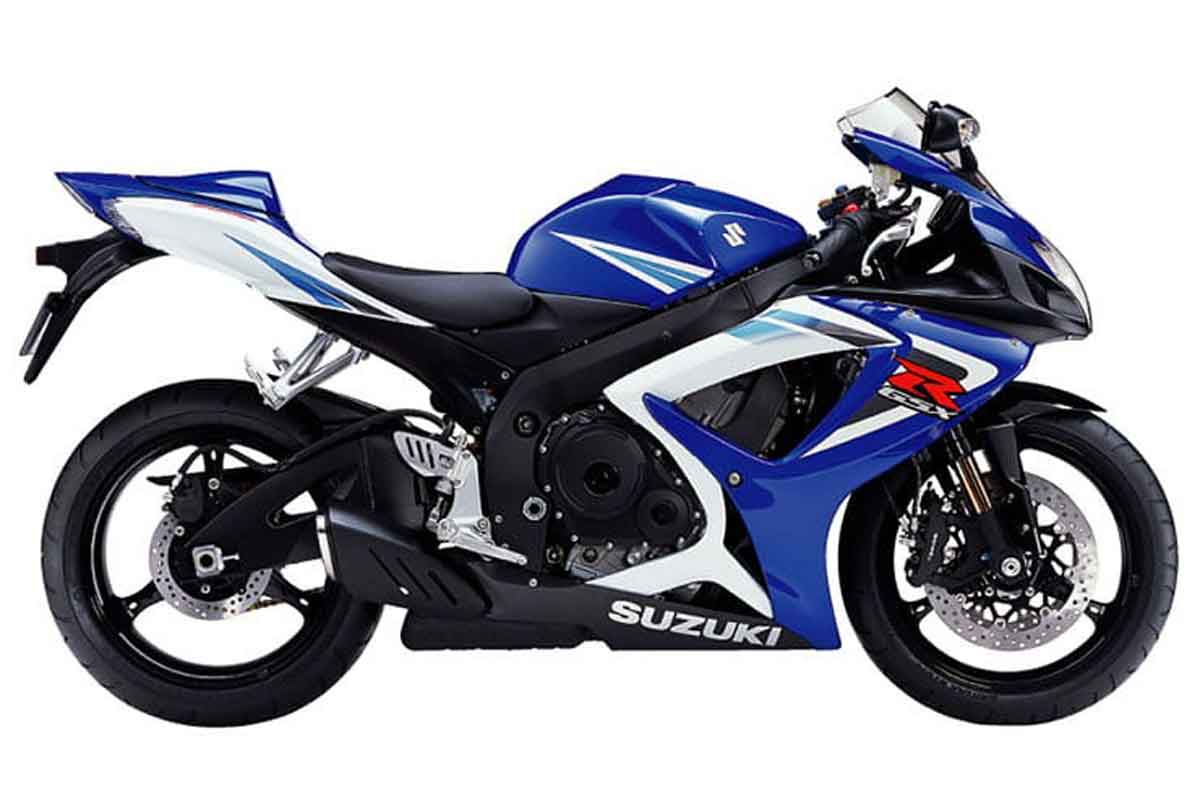
2008 Suzuki GSXR-750 K8
 Another new ‘face’. The 2008 K8 was distinguished by the same trio of halogen horizontally-mounted lights as that year’s GSX-R600, but also received a new short stroke motor with a 15,000rpm redline and, for the first time, both a slipper clutch and three-way switchable engine mapping.
Another new ‘face’. The 2008 K8 was distinguished by the same trio of halogen horizontally-mounted lights as that year’s GSX-R600, but also received a new short stroke motor with a 15,000rpm redline and, for the first time, both a slipper clutch and three-way switchable engine mapping.
2013 Suzuki GSX-R750 K13
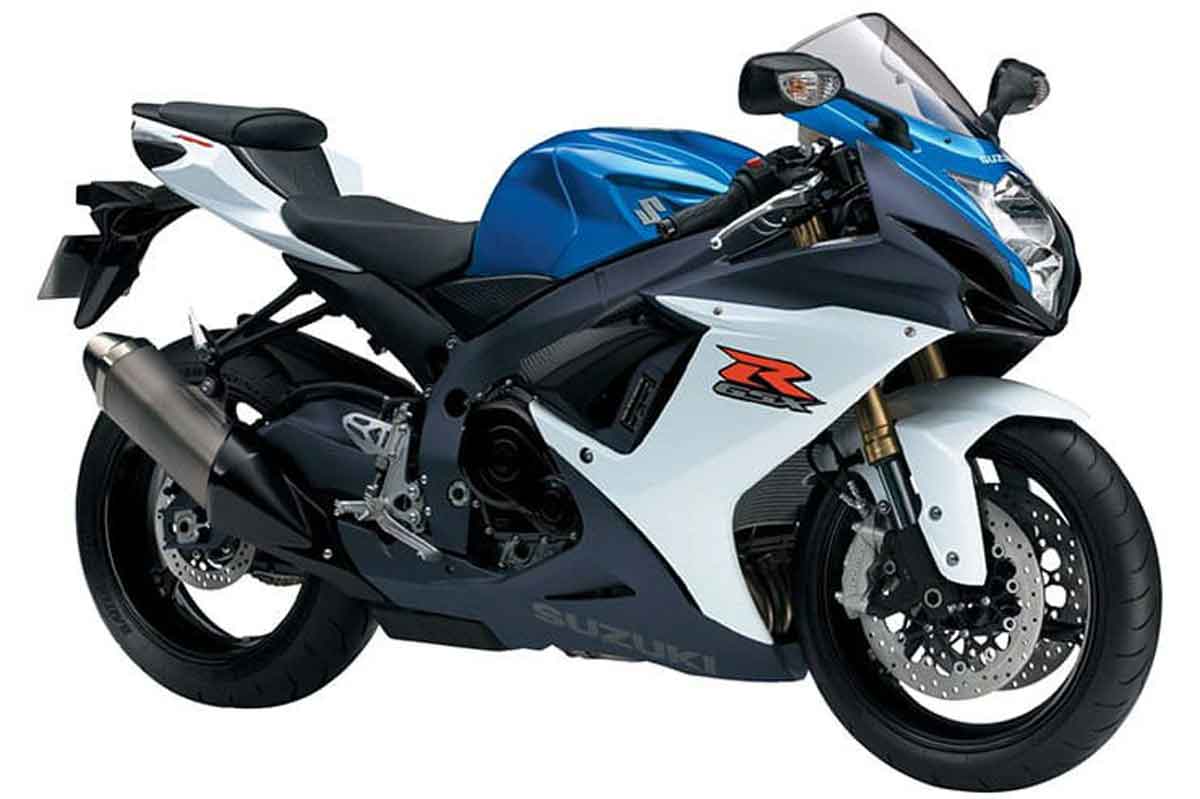 Finally, however, a new model was introduced which boasted an 8kg weight reduction, broader power delivery, improved throttle response, and a shorter, more compact wheelbase with lighter, more aerodynamic bodywork. A revised, switchable power mode system (dubbed Suzuki Drive Mode Selector or S-DMS) now provided riders with two engine maps to suit the conditions, while the chassis was lighter and more compact than ever to improve handling and performance.
Finally, however, a new model was introduced which boasted an 8kg weight reduction, broader power delivery, improved throttle response, and a shorter, more compact wheelbase with lighter, more aerodynamic bodywork. A revised, switchable power mode system (dubbed Suzuki Drive Mode Selector or S-DMS) now provided riders with two engine maps to suit the conditions, while the chassis was lighter and more compact than ever to improve handling and performance.
Conclusion
The Suzuki GSX-R750 has undoubtedly left an indelible mark on the motorcycle industry throughout its history. From its introduction in 1985 to the latest models of today, the GSX-R750 has consistently raised the bar for sportbikes in terms of performance, handling, and design.


